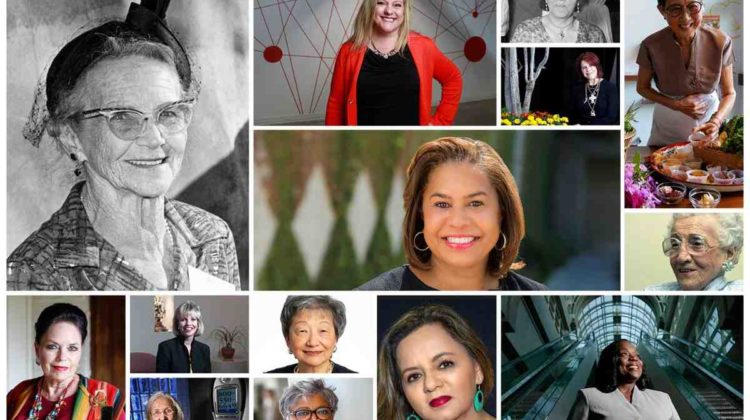
Our historian Randy Dotinga looks at abortion history in San Diego and California. Here are the first two reports.
Ten years before Roe vs. Wade, San Diego is the ultimate destination for countless pregnant women. They sought abortions at other underground hospitals in the city, including one related to a horrific abortion that has engulfed the West Coast as a whole.
These women share two things: despair and a willingness to take big risks. As for the doctors and nurses who helped them, their story – depending on who you believe – “a story of shame, blood, pain, humiliation, greed, and death” or a story of generosity and kindness.
“I helped humanity,” said one woman who had an abortion in Hillcrest in the 1930s and 1940s.
California outlawed abortion unless the mother’s life was in danger when she became a state in 1850. However, “although abortion was illegal, women continued to have — Either in the hands of others or through themselves, ”says Laicio University Professor of History Alicia Gutierrez-Romine in her book 2020″ From Back Alley to the Border: Criminal Abortion in California, 1920-1969. “
San Diego, for its part, was on the conservative side of the early 20th century. In 1917, the City Council ordered La Jolla swimmers to cover their hands and feet whenever they left the water, until she also passed a law prohibiting sex outside of marriage.
“The scandal is expected to end,” Sacramento Bee said.
But in the 1930s and 1940s, it was reported that the abortion ring worked from the top floor of the San Cortez hotel in San Diego. A private San Diego Sun reporter found that the abortion costs over $ 50 to $ 100 and can be easily obtained through a letter from a doctor or an appropriate combination, Guitierrez-Romine said. But even abortion providers are not immune to most cases: They are unresponsive, the reporter found out, if a woman is not married.
Meanwhile, a woman named Laura Miner “has made a name for herself as one of the best abortion experts in the industry,” Gutierrez-Romine said.
“It has become well-known that a person seeking her services could leave a message with the owner of Fleming’s Drug Store at Park Boulevard,” her granddaughter Robin Beers said in an article for the website dedicated to Hillcrest. “She has famous clients including movie stars alike from the eyes of Hollywood, ballet dancers and actresses.”
Before Roe and the rights groups the rights of the rights of the rights of the rights of the rights of the rights of the rights of the rights of the rights of the rights of the rights of the rights of the rights of the rights of the rights of the rights of the rights of the rights of the rights of the rights of the rights of the rights. harming the lives of women. In addition to social and family stigma, women may be fired or deprived of access to education. Public welfare benefits are limited.
Underground services provided assistance. But Miner’s name put her in the jam. According to her granddaughter, the president of a group of illegal abortion doctors encouraged her to join what is known as the Abortion Ring on the Pacific coast. Later, “she was not worried about trading evidence against him to protect herself from prosecution.”
The collapse of the group, which operated in every West Coast capital city, was a big story in the 1930s, although some documents refer to “illegal activities” rather than “abortions.” Gutierrez-Romine describes the ring as “an abortion mill that provides protection to abortion for hundreds – if not thousands – of women.” But she also quotes a critic who describes it as “the most bizarre and controversial crime in the history of medical science ne It is a story of shame, blood, pain, shame, greed, and death; of how red-handed abortion, dominated by high-profile criminals, weighs on the profits from infanticide. ”
Miner returned to the abortion business in the 1940s, working from a chiropractor’s office in the Hillcrest bank building. She was arrested in 1948 in an attack and spent two years in prison. A medical colleague testified that when asked if she had committed a crime, she “bowed her head, did not answer, and pulled out several pictures of her children.”
“I can still lift myself up, and I respect myself because my conscience is clear. I helped humanity, “said Miner in 1950. (According to her grandchildren, Miner was a progressive activist in the 1970s. Miner’s daughter, Joyce Beers, became a major activist after the revitalization of Uptown County in the 1970s and 1980s. It is the name of a community center in Hillcrest.)
Illegal abortions moved to Tijuana in the 1950s and 1960s, more commonly known as “abortions.” Women from other places contacted San Diego and headed south to a city that “became both a beacon and a spectacle — the potential for women to have easy access, a sense of risk and danger of illegal activities. a “assistant. -the rider, ” an uncivilized country ‘,’ said Gutierrez-Romine.
Next: The result of an abortion in Chula Vista led to a dramatic change in state law in the 1960s. And in the 1980s, a bomb plot exploded as San Diego became a center for the fight against abortion. We will bring back the history of this week in the second part of this series.
